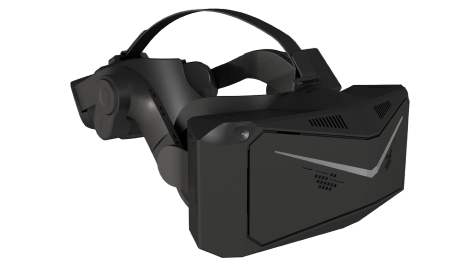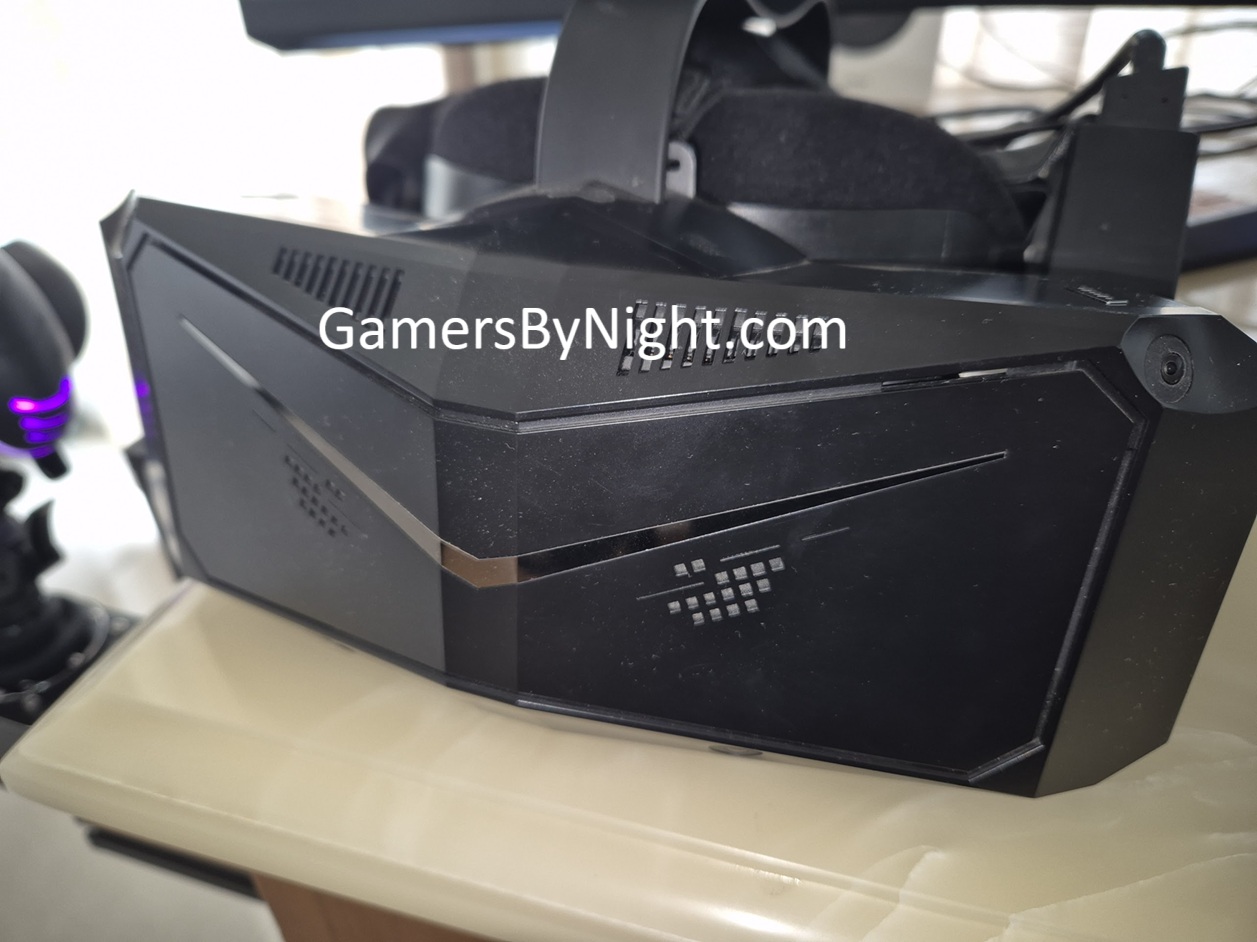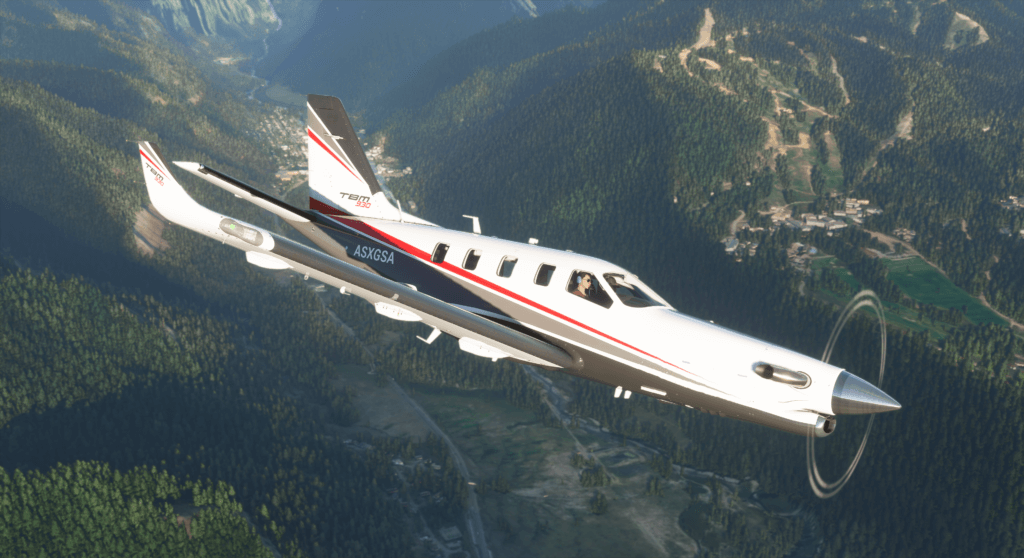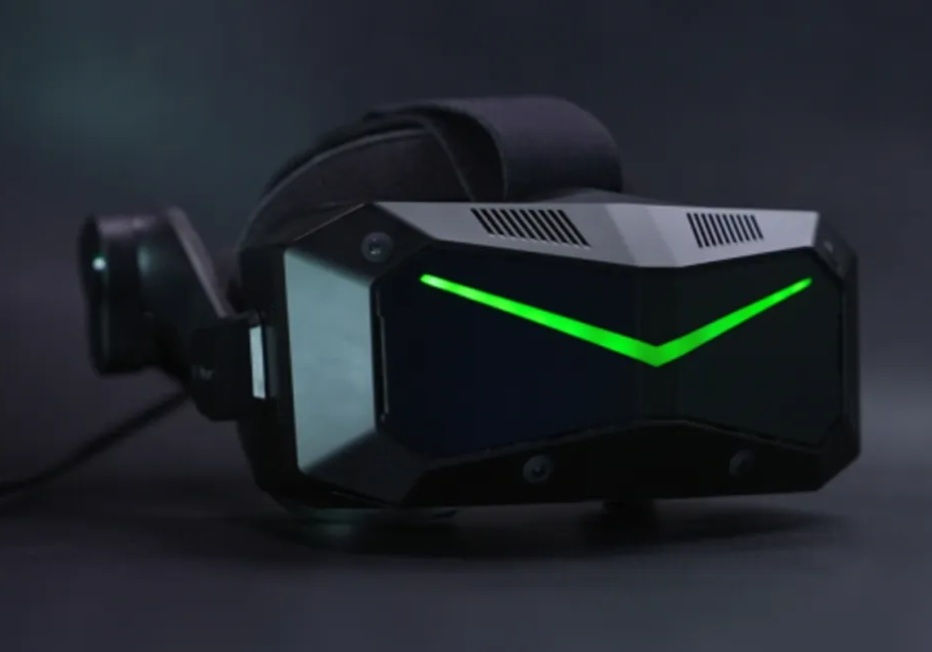The 2020 Microsoft Flight Simulator is perhaps the most ambitious and revolutionary flight sim of our generation. The technology it uses to simulate the entire planet in such detail, along with weather and other effects is truly remarkable.
When combined with a good, VR headset the sim truly comes to life. This combo of a VR + MS Flight Sim is without a doubt, the closest you can come to real life flight outside of an actual plane!
However, not all VR headsets are created equal. For example, the Index is a great VR headset but almost 40% of its price is the lighthouses and controllers which you don’t really need for MS Flight Sim or any flight sim for that matter.
What you need for MS Flight Sim is a headset that:
- Has the maximum possible resolution
- Exceptional lens quality
- Comfortable enough to be worn for long flight sessions
Things like hand controllers are completely irrelevant for flight sims since you would be using a HOTAS/ Joystick anyway. Tracking quality is also not that important since you won’t be jumping around in your cockpit.
With all of this in mind, here are my top VR headset recommendations for the new Microsoft Flight Simulator.
1. Pimax Crystal Light (Best Overall)
Pimax Crystal Light
- 2880x2880 resolution per eye
- High FoV, Best Comfort, Premium feel
- Eye tracking, Foveated Rendering
*Using the above link will automatically apply our special discount code (GBN) on the Pimax store!

Pimax Crystal Light is the new flagship from Pimax that offers unmatched clarity. Pimax has really grown on me in the last couple of years since the launch of the original Crystal which I personally use as my main headset. They have continued to improve and now achieved a level of quality and stability that demanding VR flight simmers expect.
Pimax headsets have always had very high resolutions but most GPUs struggled to push that many pixels. Now with the top end 4000 and 5000 series graphics cards, we can finally play on its glorious 2880×2880 resolution. In fact, I have personally tested the Pimax with the Nvidia 3080, 4090 and 5090 so far.
One thing that most people don’t realise is that the lenses are just as important as the panels in a VR headset. But lenses can be super expensive so VR manufacturers cheap out on them. The Pimax Crystal though has excellent glass lenses and I believe that is the reason for their unmatched clarity.
The headset offers a massive 130 degree horizontal FoV for amazing sightseeing. The resolution can be tweaked from 72 Hz to 120 Hz depending on your system. This is a true enthusiast product.
2. Pimax Crystal Super (Best Premium)
Pimax Crystal Super
- Resolution of 3840x3840 per eye
- Dynamic Foveated Rendering allows for better performance
- Highest FoV
*Using the above link will automatically apply our special discount code (GBN) on the Pimax store!
The Pimax Crystal Super dominates the competition when it comes to clarity, visuals and field of view. It offers almost double the resolution and FoV of most other consumer grade headsets and it does that at a price that is high but not beyond the reach of what us flight simmers have to pay for graphics cards, premium joysticks and other hardware.
The Crystal Super has an even higher resolution and FoV which makes it the real halo VR headset.

My main concern with these high end headsets was that they would need so much GPU power to run, that performance would be miserable. However, we have come a long way since then and Pimax Crystal Super now offers Dynamic Foveated Rendering! This combined with a top end GPU means flawless flight simming for hours. Of course, this quality comes at a price. The choice between the Crystal Light and Super comes down to your budget.
3. Meta Quest 3 (Best Entry Level)
- Experience total immersion with 3D positional audio, hand tracking and easy-to-use controllers...
- Explore an expanding universe of over 500 titles across gaming, fitness, social/multiplayer and...
The Quest 3 is the best mid-range option for not just MS Flight Sim, but for almost every VR game. It is the quintessential jack of all trades headset that won’t break the bank. It has good resolution, good tracking, good value, good comfort, good build quality and good everything really. Not necessarily the highest resolution, but close enough to be viable in flight sims. Which is what makes it an absolute work horse for VR gaming.
Get this headset if you are new to VR and want something that is good with all games, not just flight sims. It is the safe option. I was actually surprised with the amount of goodness packed into this headset while still maintaining such an attractive price.
- THE NO COMPROMISE VR HEADSET - Realistic visuals, soundscapes, and superb performance come together...
- IT’S ALL INSIDE - Packaging includes HP VR Headset, 6m headset cable for desktop and mobile PCs, 2...
The Reverb G2 has a beautiful 2160×2160 screen for EACH eye. This is significantly higher than what any of the competing headsets in this price range have. The FoV, sweet spot etc. are all good. Nothing groundbreaking but pretty much all VR headsets are in the same ballpark on these metrics . One unique advantage of this headset is that it is a Windows Mixed Reality headset and WMR is Microsoft’s technology. Which means Microsoft Flight Sim has been built to work best with WMR headsets and technology. The sim is optimized around WMR so the Reverb G2 does have another small but welcome advantage there compared to non-WMR headsets. You can use OpenXR which gives you a small performance boost.
Its high resolution is what makes the Reverb stand apart from the crowd. I have been using it for a while now and it offers the best clarity to read your gauges and instruments in flight sims. It doesn’t not have the best controllers, but you don’t really need them for a flight sim. My controllers are still inside the box!
But the Reverb is out of production so its a runner up.
4. Meta Quest Pro (Best mid-range)
- Meta Quest Pro unlocks new perspectives in work, creativity, and collaboration.
- Multitask with ease with multiple resizable screens so you can organize tasks, work on new ideas or...
The Quest Pro is the new King of clarity when it comes to flight simming. This makes it one of my top recommendations for MSFS and the only thing only it back is the price. But if you are willing to spend that extra cash, its the best premium option right now.
Clarity: The most important thing for a flight sim headset is clarity. More so than in any other game. You need to look at your Garmin, look at your readouts, look at all the beautiful scenery and you need to be able to actually tell what you are looking at. The Reverb does this well but it has a small sweet spot. The maximum clarity is only at the very center which was good enough for 2019 to 2021 or whatever, but The Quest Pro now has excellent quality throughout the whole lens! This is really a game change for MSFS because you can now see everything clearly without just looking at the absolute centre of your lens.
Field of View: The FoV is pretty good actually. Higher than what I expected and definitely in the top 3 among the premium headsets.
Colours: I never thought I would talk about colours but then I met VR. I started with the HTC Vive back in 2016 and it had a beautiful OLED panel with awesome colours. Since then, everything I have used has had washed out colours. I am happy to report that the Quest Pro is excellent on this regard too. Much better colours than the competition and no godrays, fringing, muras, glare or any other such issues.
Comfort: Comfort is fine for me but it really depends on your head shape. I have had headsets that would to much pressure on my nose bridge but this one seems pretty good so far. I would not call it perfect, but I don’t have any serious issues either.
Tracking and battery: Tracking is really good and battery life is decent. One hour of use drained about 15% battery life. You can also keep it plugged and it will keep charging so that’s nice.
Software & setup: Much better and easier than Windows Mixed Reality.
| Headset | Resolution (per eye) | Total Pixels (both eyes) | Refresh Rate | Horizontal FoV | Weight (with headstrap) |
| Reverb G2 | 2160 x 2160 | 9,331,200 | 90 Hz | 98° | 498 g |
| Quest 2 | 1832 x 1920 | 7,034,880 | 72 Hz | 97° | 503 g |
| Quest Pro | 1800 x 1920 | 6,912,000 | 90 Hz | 106° | 722 g |
| Vive Pro 2 | 2448 x 2448 | 11,985,408 | 120 Hz | 116° | 850 g |
| Pimax 8K X | 3840 x 2160 | 16,588,800 | 90 Hz | 159° | 850 g |
| Index | 1440 x 1600 | 4,608,000 | 144 Hz | 108° | 809 g |
| Cosmos Elite | 1440 x 1700 | 4,896,000 | 90 Hz | 97° | 702 g |
| Rift S | 1280 x 1440 | 3,686,400 | 80 Hz | 88° | 590 g |

5. Valve Index (Most versatile)
The Index is an excellent VR headset. I am still a massive fan of lighthouse tracking and the excellent controllers of the Index. However, you don’t really need that for sims. For sims, you need clarity and the other options in this list have an advantage there. But if you do want to play other types of games and sims are less of a priority for you, then the Index is a decent option to consider.





